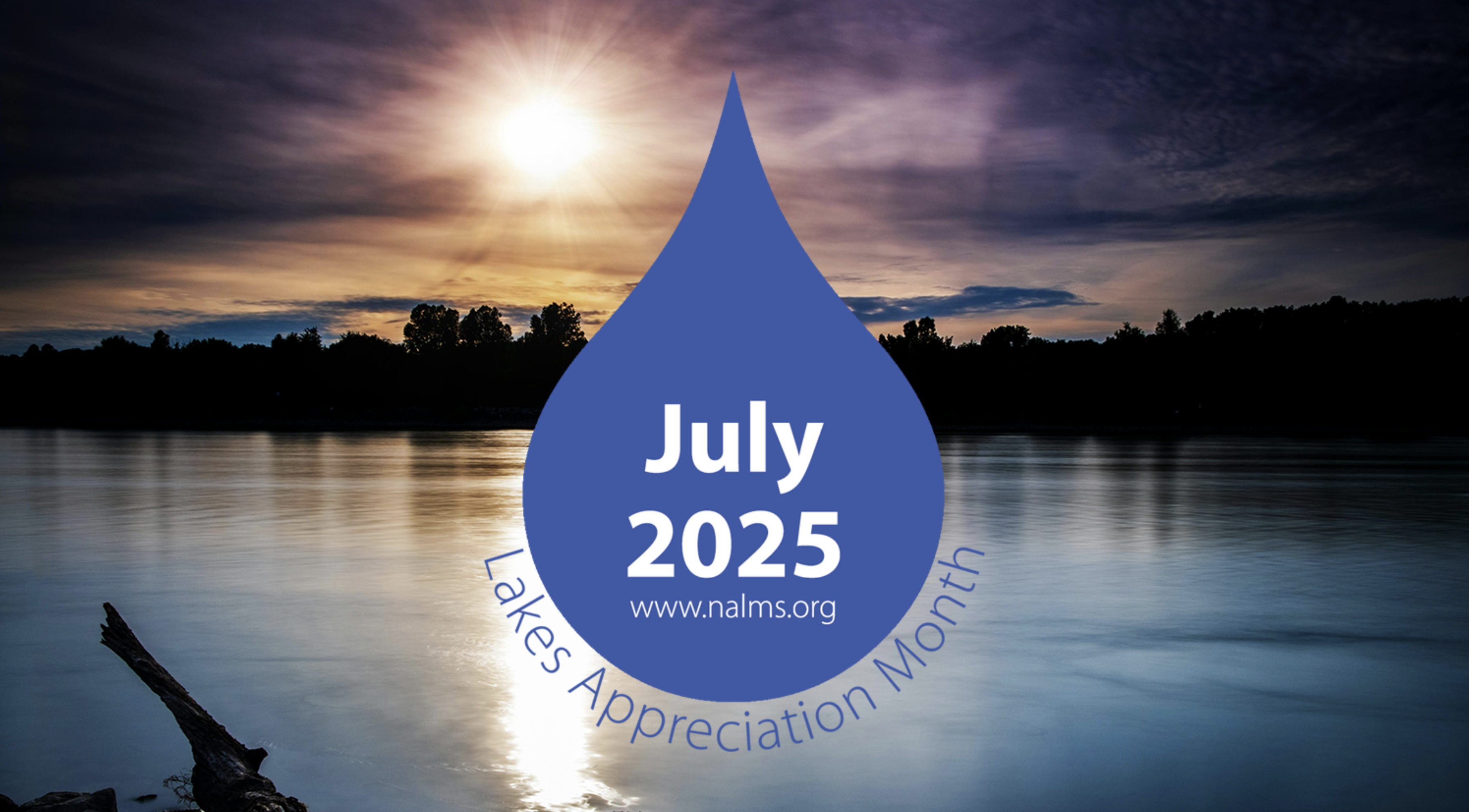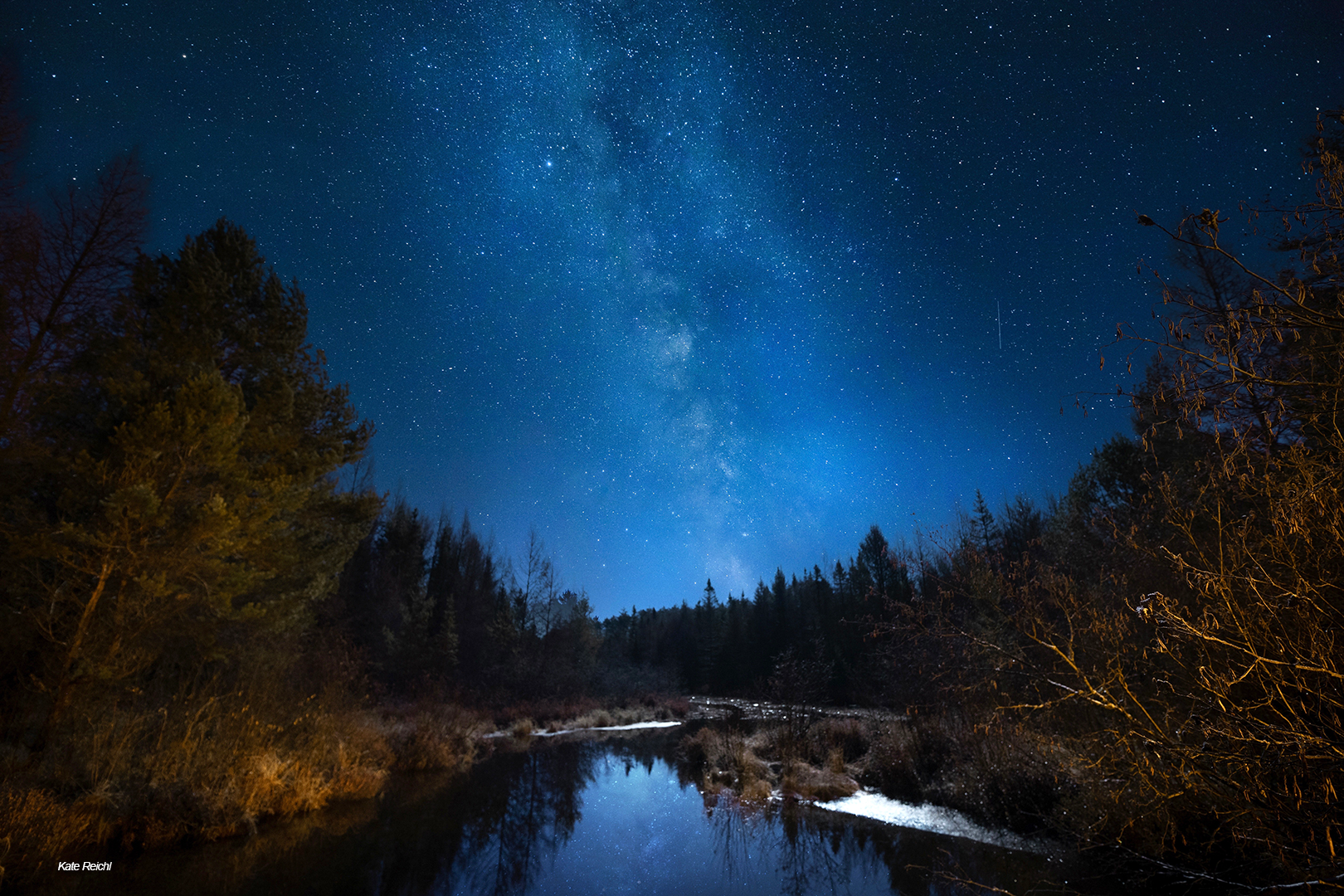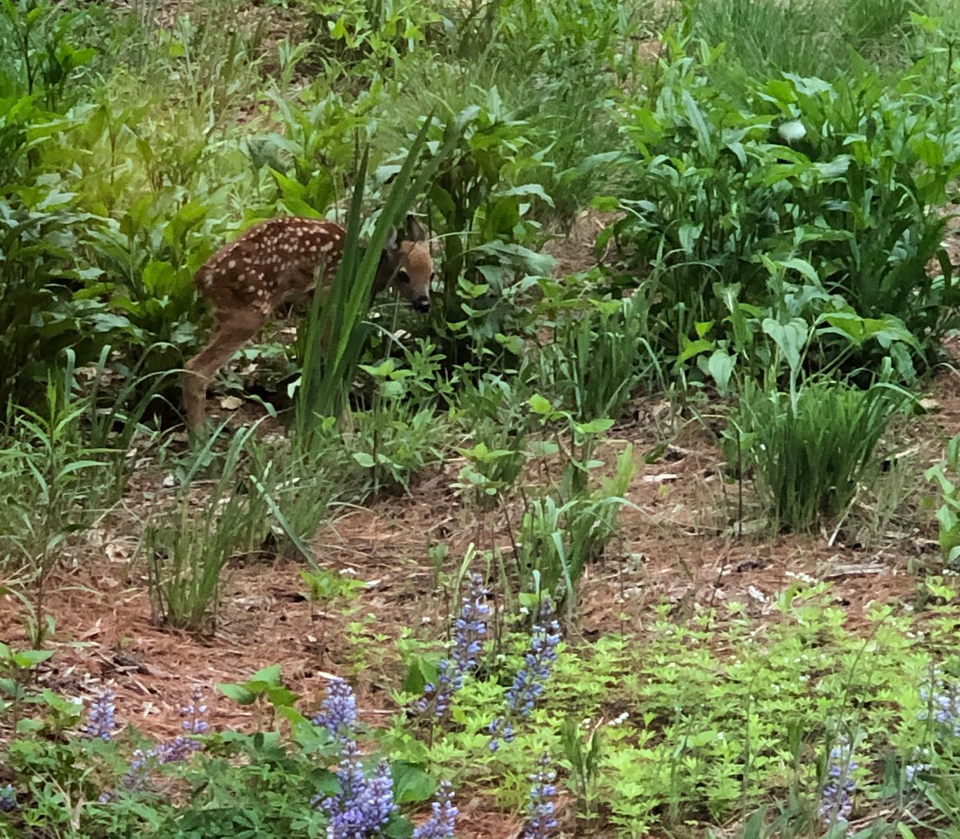|
|
July is Lakes Appreciation Month!
|

|
|
|
|
|
|
Celebrating Dark Skies with a Star Party!
|
|
|
|

|
"Winter River Under The Milky Way" by Kate Reichl took second place in the 2024 Wisconsin Lakes and Rivers Photo Contest in the Natural Features In and Around Lakes and Rivers category. This dark sky photo was taken on Aurora Creek in Vilas County.
|
|
|
|
Changing Outdoor Lighting to Change Your World
"As shoreland property owners, we have a great opportunity to improve the world simply by rethinking our outdoor lighting," said a recent caller concerned with light pollution around their lake. It's true; reducing light pollution helps protect wildlife and ecosystems, benefiting migratory birds, pollinators, and other nocturnal creatures, which can be harmed by excessive artificial light. Since light pollution is reversible, you can make a tangible positive difference!
We can all help ourselves and our neighbors by using more efficient lighting. Since inefficient fixtures waste money and use more electricity, this investment can quickly pay for itself. You can help preserve the beauty of the natural night sky, allowing your family and future generations to experience constellations and the Milky Way, which are otherwise obscured by sky glow. Properly designed sensible lighting can enhance actual safety and security more effectively than glaring, poorly aimed lights. This also helps maintain the desired quiet, open, dark space that shorelands offer at night for privacy and enjoyment.
|
|
|
|
Phenology Fun Fact
Monarch butterflies are munching on milkweed!
If you find a milkweed plant, look for monarch caterpillars and butterflies. The monarch butterfly lays its eggs on milkweed leaves, because the growing larvae (caterpillars) eat only these specific leaves. Milkweed leaves contain a toxin that doesn't hurt the caterpillar, but it does make the caterpillar poisonous and bad-tasting to many predators. Because it eats milkweed leaves as a caterpillar, the monarch butterfly is also poisonous.
Did you know...
- Sap from milkweed was used by pioneers as a cure for warts.
- The fluffy parachute of the seed is used by Native Americans to insulate moccasins.
- The dried empty seed pods were used as Christmas tree decorations by early pioneers.
- Wisconsin students collected 283,000 bags of milkweed fluff for use in military life jackets during World War II.
- Milkweed is used as an indicator of ground-level ozone air pollution.
|

|
Photos show monarch caterpillars munching on common milkweed (Asclepias syriaca), a monarch butterfly on butterfly milkweed (Asclepias tuberosa), and another monarch on common milkweed.
|
|
|
|
|
|
|
|
Lakes and Rivers Convention
|
|
|
|
SAVE THE DATE for 2026!
“Decades of Dedication”
April 15-17, 2026
|
|
|
|
When tackling a monumental challenge, it sometimes takes a long time to see results. The 2026 Wisconsin Lakes and Rivers Convention will look back on the long-term programs and the accumulated actions of countless people that have persevered through many decades. Their dedication has ensured that the programs developed in the '70s, '80s, and '90s are still going strong today. We will also celebrate the people who will continue to carry the torch for water protection and restoration into the future.
|
|
|
Photo Contest Celebrating 10 Years of Healthy Lakes & Rivers
|
|
|
|

|
Karen Reynolds caught this little fawn taking up residence in her rain garden at Gilbert Lake in Waushara County.
|
Healthy Lakes & Rivers Celebrates 10 Years - PHOTO CONTEST
What better way to celebrate 10 years of the Healthy Lakes & Rivers program than with a Photo Contest?!
We want you to show us what you are doing to keep our lakes and rivers healthy!
Picture your favorite lake or river.
What time of day is it?
Are you along the shore? ...on a boat? ...in the water?
Can you hear frog calls or the buzz of a dragonfly's wings as it snatches a mosquito above you?
What do you see, feel, and smell?
In his book, For Love of Lakes, Darby Nelson wrote, "The vegetated zone of the lake is more than a place to delight the senses. It is a sacred garden. Loss of the garden plucks the pulsing green heart from the lake."
If you live near a lake or river, you probably already know that every change you make to Mother Nature's design will affect the waterway and the other animals that live there. Striking a balance between enjoying our waterways and loving them to death is serious business, and we'd love for you to show us how you're part of the solution!
Send us your photos showing (photo contest categories):
1) Healthy Transformations: Before/After (ex: disturbed shoreline/restored shoreline with native flowers, shrubs, and trees; eroded shoreline/fortified with long-rooted native plants; erosion from runoff or runoff headed straight for the water/diverted and captured before getting to the lake or river)
2) Wildlife Enjoying Habitat (ex: heron in a native planting, frogs in a rain garden, fish swimming among the branches of a submerged tree)
3) People Making Healthy Lakes & Rivers Together (ex: planting a rain garden, fishing near fish sticks, enjoying your natural shoreline)
Winners in each category (plus the most clever caption) will enjoy prizes including Healthy Lakes & Rivers swag, a free workshop at the Wisconsin Lakes and Rivers Convention, inclusion of photo(s) in a future Wisconsin Lakes and Rivers Partnership publication, and bragging rights!
DEADLINE: SEPTEMBER 30, 2025
|
|
|
|
|
|
|
|
|
|
Blue-green Algae Talks
Gina LaLiberte, the Wisconsin Department of Natural Resources' Statewide Harmful Algal Bloom Coordinator, will talk about the biology of cyanobacteria and health impacts on humans and pets.
July 22 - Clean Lakes 101: Harmful Cyanobacteria Blooms in Our Water
4:00-5:00 PM (doors open at 3:30), Q&A session to follow
East Side Club (3735 Monona DR, Madison, WI 53714)
July 29 - Harmful Cyanobacteria (Blue-green Algae) Blooms in Wisconsin
Lake Country Clean Waters July quarterly meeting
5:00-6:00 PM - Pewaukee Public Library Meeting Room (210 Main ST, Pewaukee, WI 53072)
|
|
|
Center for Limnology Open House - August 1
Get a first-hand look at what research is going on at the station this summer, as well as meet the scientists and students conducting it. Activities for visitors to the station include meeting some of the fish that call Wisconsin’s northern lakes home, learning to tell invasive species from natives, and talking with scientists about the state of Wisconsin's lakes and our role in keeping them healthy for future generations. There will be aquatic-themed crafts and free Babcock Dairy ice-cream making it fun for the whole family!
1:00-5:00 PM - UW-Trout Lake Station (3110 Trout Lake Station DR, Boulder Junction, WI 54512)
|
|
|
Watpa waḳaŋ Nibi Walk (Rum River Water Walk) - Begins August 2
Watpa waḳaŋ (Mystic River in the Dakota language) also called the Rum River, is a small, slow river that begins in Mde waḳaŋ, (Spirit(ual)/Mystic Lake, also called Lake Mille Lacs). It meanders 151 miles through Onamia, Milaca, Princeton, Cambridge, Isanti, and St. Francis before joining the Mississippi River in Anoka, 20 miles northwest of Minneapolis. Watpa waḳaŋ is a protected Wild and Scenic river in Minnesota.
The walk will last 4-5 days and begin at James' Dam on Mde waḳaŋ (Mille Lacs) - 566V+5G, Vineland, MN 56359
|
|
|
Snapshot Day - August 9
Snapshot Day is a statewide, one-day event connecting volunteers, water lovers, and local conservation groups in a search for aquatic invasive species (AIS). You can help protect Wisconsin’s rivers, lakes, and wetlands from these invasive plants and animals that may negatively impact habitat, wildlife, recreation and health. This event is coordinated in partnership with UW-Madison Division of Extension, Wisconsin Department of Natural Resources, local partners, and YOU!
|
|
|
Star Party! - August 21
In conjunction with the Northwoods LIGHTS OUT! events, Oneida County is hosting a Star Party! Find out what you can do to protect the dark sky and view nebulae, star clusters, and double stars through telescopes (provided by Northwoods Explorers of Space and Astronomy). Bring blankets/chairs to get comfy under the stars. Tom Barnett, local artist, will be live at this event to paint a "Star Scene" that will be given away!
8:00-10:30 PM (arrival time 7:30-8:00 PM) - Nicolet College (5364 College DR, Rhinelander, WI 54501)
|
|
|
Surface Water Grants Pre-Application Deadline - September 15
Eligible Surface Water Grant applicants must submit a pre-application by 11:59:59 pm on Sept. 15 to DNRSurfaceWaterGrants@Wisconsin.gov. AIS Research and Development applicants will submit a pre-proposal in lieu of a pre-application.
If you have received a Clean Boats, Clean Waters or LMPN grant in the past, you are not required to submit a pre-application. Returning LMPN applicants must simply notify their AIS biologist that they intend to apply by Sept. 15.
|
|
|
|
|
|
|
|
|
|
Did this come to you from a friend? Subscribe HERE.
|
|
|
|
|